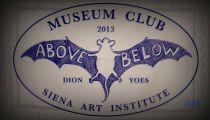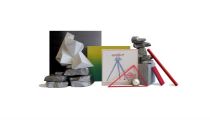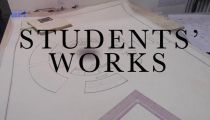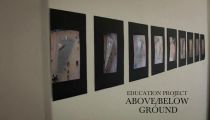Expedition Speakers
Nina Burleigh is an investigative journalist and the author of five books. In the last several years, she has traveled from the Arctic to the Middle East and the Amazon, covering a wide array of subjects, including American politicians, Israeli archaeological forgers, sexual assault and drug addiction among Iraq war veterans, Arab feminists and the Arab Spring, man, nature and shamanic tourism in the jungle, a small-town Italian mayor murdered over slow food politics and the surprising lifestyles of Chinese immigrants to Italy.
A member of the Explorers Club, Burleigh first got interested in expeditions as a child when she made a cross-continent journey by train, from the Midwest to San Francisco, and later traveled to Baghdad and lived there for half a year.
Her award-winning 2008 book Mirage, tells the story of an expedition that took place under the command of Napoleon Bonaparte and the French Army. A small and little-known corps of Paris's brightest intellectual lights left the safety of their laboratories, studios, and classrooms to embark on a thirty-day crossing into the unknown--some never to see French shores again. Over 150 astronomers, mathematicians, naturalists, physicists, doctors, chemists, engineers, botanists, artists--even a poet and a musicologist--accompanied Napoleon's troops into Egypt. Carrying pencils instead of swords, specimen jars instead of field guns, these highly accomplished men participated in the first large-scale interaction between Europeans and Muslims of the modern era. And many lived to tell the tale.
Burleigh will be completing a thriller during her time in Siena, about a trio of teenaged misfits who must travel from school in New Hampshire to the Middle East, Paris and the American West, battling a supercomputing, super-surveilling villain.
Mark Dion has created many works that employ the form of the expedition and examine how dominant ideologies and public institutions shape our understanding of history, knowledge, and the natural world. Projects such as Phantoms of the Clark Expedition and Travels of William Bartram Reconsidered highlight the methodology of knowledge-seeking. The job of the artist, he says, is to go against the grain of dominant culture and to challenge perception and convention. Appropriating archaeological and other scientific methods of collecting, ordering, and exhibiting objects, Dion creates works that question the distinctions between objective (rational) scientific methods and subjective (irrational) influences. The resulting work from his most recent expedition, Gyre: An Expedition and Exhibition with Marine Debris as Material and Message, will be shown at the Anchorage Museum, Anchorage, Alaska in February 2014.
Mark Dion lives in NYC with his wife Dana Sherwood and in rural Pennsylvania where he is the co-director of Mildred’s Lane, along with artist J. Morgan Puett.
Luigi Folco, is a planetary science researcher and lecturer of Planetary Geology at the University of Pisa’s Earth Science Department. He is the principal investigator of the Italian Antarctic Meteorite Search project within the Programma Nazionale delle Ricerche in Antartide (PNRA), and Councilor della Meteoritical Society. He has published about eighty peer-reviewed papers in international journals. In 2006, Asteroid(7006) was named Folco in his honor by the The International Astronomical Union. In the same year he was awarded the Carlo Minguzzi prize by the Società Italiana di Mineralogia e Petrologia for his cosmochemical studies.
Luigi Folco's areas of research include i) cosmochemical analyses of meteorites to explore the origin and evolution of the Solar System, ii) geology and geophysics of impact craters to investigate the collisional history of our planet and assess impact hazard; and iii) the search for meteorites in hot and cold deserts.
Since 1993, Luigi Folco has led many expeditions in remote desert areas of the Earth, including nine in Antarctica and four in the Moroccan, Tunisian, and Egyptian Sahara in order to collect meteorite specimens for his studies.
He has been a guest lecturer and invited speaker at several international schools and conferences of planetary science and has taken part in several national and international education, outreach, and communication initiatives, including Shine, Pianeta Galileo and the Third International Polar Year. These initiatives are for the dissemination of the scientific activities of Folco's research group and cover various general topics including planetary and space sciences, as well as polar sciences and exploration.
Michael Höpfner is known for his walking journeys in desert and steppe areas between Eastern Europe and Western China. He walks alone over weeks and months, carrying just a backpack with food, a tent, a sleeping bag, cameras and notebooks. He reflects on these barren landscapes, the changing nomadic societies and his own performance and installations that use black and white photography, drawings, slide projections and tent sculptures.
In his latest expedition projects on the vast plateaus in Western and Northern Tibet, he is in search of places where natural spirits are worshiped and time and space are defined by mystical shamanistic practices that stand in contrast to the industrialization of these remote landscape.
Höpfner lives and works in Vienna and Berlin and currently teaches at the Academy of fine Arts in Vienna. His latest work is currently shown at the “Flex Sil – reloaded” exhibition at Kunsthalle Sankt Gallen in Switzerland.
Cesare Pietroiusti is an artist living in Rome and concerned with paradoxical situations that are hidden in common relationships and in ordinary acts.Through performative actions, his practice explores the relations between the logics of economy, exchange and art’s perceived worth. Trained as a medical doctor, Pietroiusti studied psychiatry in the late 1970s. His artist’s book Pensieri non funzionali (1997) (Non Functional Thoughts , 2000) documents his projects, both realized and un-realized (www.nonfunctionalthoughts.net). Either singularly or as a member of collectives, Pietroiusti has participated in group and solo exhibitions since 1977. He has been a professor of studio practice at the IUAV University of Venice since 2004 and is MFA faculty professor at The Art Institute of Boston (2009-on-going), as well as curator at the Fondazione Ratti residency program in Como (2007-2011). Co-founder of many artist-run projects including the experimental space Jartrakor in Rome (1977-1985), Gruppo di Piombino (1986-1992), Giochi del Senso e/o Nonsenso (1994-1996), Oreste Projects (1997-2001), Nomads and Residents in New York (2000-2001), Lu Cafausu (2007-ongoing),Trastevere 259 (2009-ongoing), and Museo dell’Arte Italiana in Esilio (2010-ongoing), Pietroiusti is currently administrating a quasi-bankrupt medical clinic in Rome.
Rob Shorrock teaches Latin, Greek and Archaeology at Eton College, Windsor. He is curator of Eton’s Egyptian and Classical antiquities and editor of the journal Greece & Rome. He studied in Durham and Cambridge and is the author of several books on late antique poetry and the interaction between pagan and Christian ideas. He is co-author of the Penguin Latin Dictionary and is currently working on a new translation of the longest surviving epic poem from antiquity – the Dionysiaca of Nonnus – which tells the story of Dionysus’ long and eventful journey from cradle to godhead via Asia Minor, India and the Mystery cult of Eleusis outside Athens. Rob’s own more modest travels have taken him by bike through the Peloponnese, around Sicily and over the Apennines from Rome to Rimini along the via Flaminia. He has recently returned from a two year sabbatical with his family in divided Cyprus and is now dividing his own time between Eton and Florence.
Amy Yoes works in a multi-faceted way, alternately employing painting, photography, installation, video, and sculpture. Among her recent projects are large sculptures created to be set on fire and photographed; stop-motion animations that follow an organic progression of hand-made geometric episodes; and a video piece that captures the trajectory of the sun recorded in the form of moving shadows and colored light created by sculptural devices. An interest in decorative language and architectural space permeates all of her work. She responds to formal topologies of ornament and style that have reverberated through time, informing our collectively constructed visual and cultural memory.
She is currently working on a series of sculptural machines that highlight observation of physical phenomena and natural forces, and illuminate details of our everyday surroundings.
Amy Yoes grew up in Houston, Texas and attended the School of the Art institute of Chicago. She lives and works in Brooklyn with her husband, artist Jorge Colombo.














